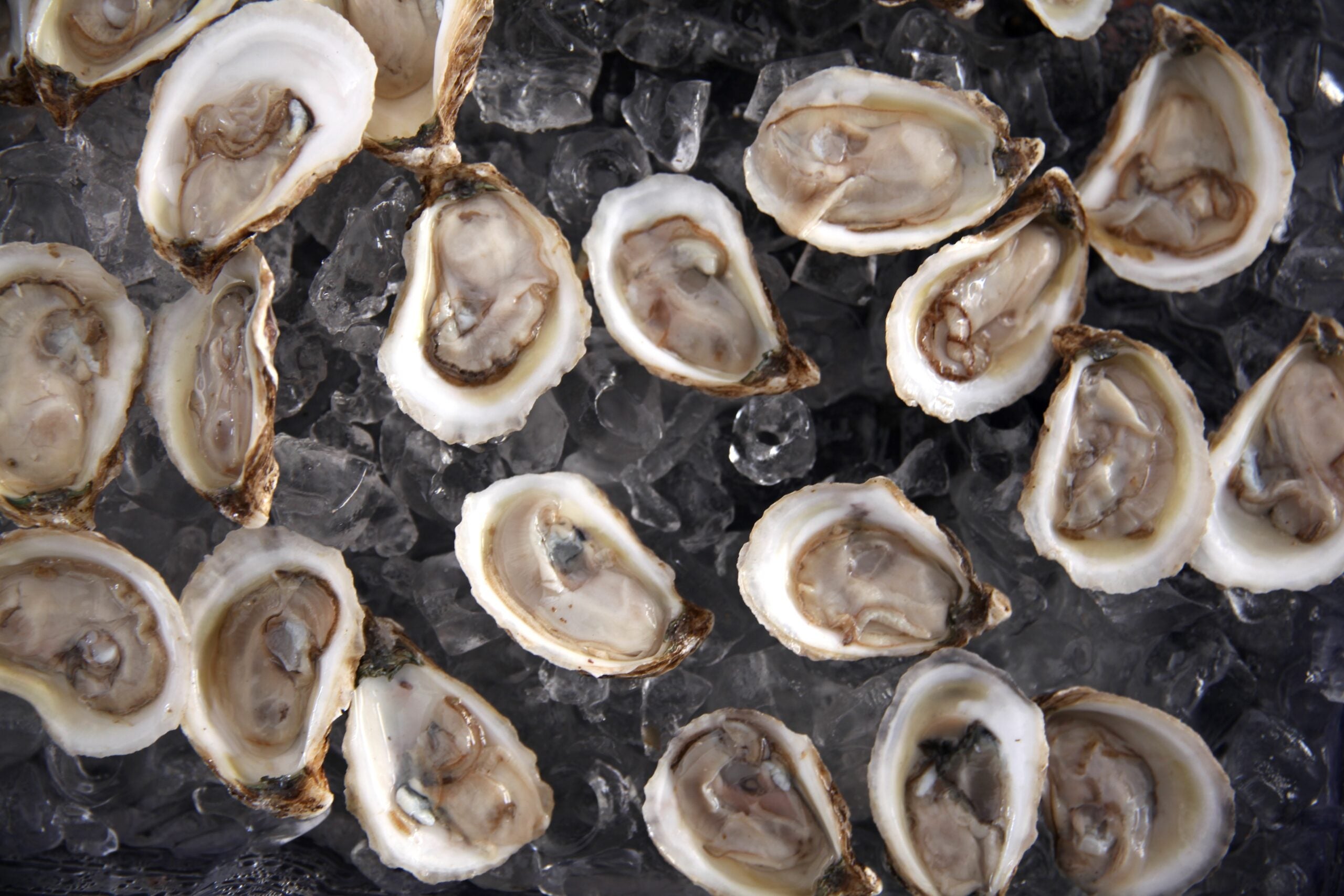They used to say to eat oysters only in months with an R (September through April), but that rule’s obsolete—and that’s not even the best news. Order a dozen, and you’ll almost certainly be slurping pretty sustainably. Both wins owe to the fact that 95% of oysters on the U.S. market are farmed, and those bivalves have the smallest carbon footprint of any creature in the sea. Whereas cultivating fish can emit anywhere from 3.5 to 18.9 kilograms of greenhouse gas per kilo of edible weight, growing bivalves emits just 1.4. Plus: Along with other hinged gems like mussels and scallops, oysters can actually improve their environment.
Here’s a rundown of why we love ‘em:
QUICK PSA:
Though it’s rare, farmed oysters can harbor disease-causing bacteria called vibrio. If you’re immunocompromised—or just concerned—opt for cooked oysters, since heat kills the baddies.
They leave the water cleaner than they found it
Oysters and other bivalves are “filter feeders,” meaning they eat microorganisms and excess nutrients like nitrogen that can lead to the growth of toxic algae blooms. A 1-acre oyster farm can filter 5 million gallons of water a day—or 50 gallons per critter—and cultivated bivalves suck up 129.8 kg of nitrogen per ton of food, whereas tilapia emits 199.8.
They regenerate and boost biodiversity
Decades of overfishing, along with pollution and climate change, have decimated wild oyster populations. Farms help to seed new growth when some larvae get loose and float over to the wild side. Oyster reefs—whether human-made or natural—also make excellent habitat for other marine life to eat, reproduce, and duck predators.
They protect the coastline
Oyster beds can be effective barriers. Their structure softens the impact of waves and tides, which can help to fend off erosion. The Billion Oyster Project in New York, for example, has restored 15 reefs around the five boroughs, in part to protect the city from storm damage.
They’re self-sufficient
Unlike other cultivated seafood, bivalves don’t use up resources like land, livestock feed, or fertilizers. It takes 15.3 square meters of land and 1.23 cubic meters of water (more than three bathtubs’ worth) to produce 1 kilo of tilapia, while oysters need none.
They’re nutritional superstars
Like other bivalves, oysters are an excellent source of protein and other dietary necessities. Two medium-sized Pacific ones contain 9 grams of protein, almost half of your daily iron, and more than a full day’s ration of B12 and zinc.

